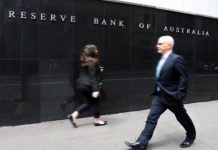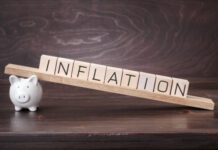Markets
The November rally in core bonds continued yesterday, but unlike Wednesday they closed off the intraday highs. A dovish hold by the Bank of England and disappointing US Q3 unit labour costs (-0.8% Q/Q with upward revision to Q2 figure: 3.2% from 2.2%) called the shots. Equity markets rallied in lockstep with key European indices ending 1.5% to 2% higher and main US benchmarks recording equal gains. EUR/USD went from an open at 1.0570 to a close of 1.0622. Daily changes on the US yield curve ranged between +4.6 bps (2-yr) and -12.7 bps (30-yr). The US 2-yr yield tested the October low (4.92%), which is the neckline of a double top formation, but bounced off this mark. Similar support in the US 10-yr yield stands at 4.58% (vs 4.66% close yesterday). German yield differences varied between +2 bps (2-yr) and -6.9 bps (30-yr). The German 10-yr yield tested a same double top formation (with October low of 2.68% as neckline), but a break lower didn’t happen. UK Gilts outperformed with yields ending 6.2 bps (2-yr) to 11.6 bps (7-yr) lower as the belly outperformed the wings. The Bank of England’s split decision to hold rates instead of hiking was less tight than in September (5-4 vs 6-3) with the updated Monetary Policy Report barely showing growth across the policy horizon. Sterling initially weakened from EUR/GBP 0.8690 towards 0.8735, but closed near unchanged around 0.87. From a technical point of view, the pair fails to really make headway beyond 0.87-0.8750.
Today’s calendar centers around US payrolls and services ISM. Consensus expects 180k net job growth, a stable unemployment rate (3.8%), wage growth of 0.3% M/M & 4% Y/Y and the ISM ticking back from 53.6 to 53. In light of the recent bond correction, we see asymmetric risks with markets rallying (& dollar softening) on weaker or in-line data. A huge upward surprise for both is likely needed to send bonds and stocks lower again. First Fed governors are scheduled to speak after this week’s FOMC meeting (Barkin, Kashkari, Bostic) and serve as a wildcard. ECB Schnabel already said that the central bank can’t close the door for further rate hikes. “After a long period of high inflation, inflation expectations are fragile and renewed supply-side shocks can destabilize them, threatening medium-term price stability.” She added that it took a year to get inflation from 10.6% to 2.9% currently, but that the ECB expects it to take about twice as long to get back to 2% from here.
News & Views
The Czech National Bank kept the policy rate unchanged at 7% yesterday in a 5 (hold) – 2 (cut) vote. Markets and analysts believed the central bank would have started the cutting cycle with a 25 bps move. The risk of unanchored inflation expectations persists, the CNB explained. “This risk could manifest itself in the results of the ongoing wage bargaining process and in stronger-than-expected repricing of goods and services at the start of next year.” Price pressures indeed eased dramatically but remain too high. Especially core inflation is cause for concern, with the outlook for 2024 at an average of 3%. The decision was made even as economic growth was cut. It’s overshadowing a weakening economy, which unexpectedly contracted in Q3. The CNB expects -0.4% this year before returning to growth of around 1.2% next year. The central bank added that the depreciation of the koruna delivered a slight easing of overall monetary conditions. It added to the case of keeping rates as they are. The Bank Board did discuss a strategy for a future reduction in rates and assumes that any decrease will initially be moderate and gradual. Since its internal models project a 50 bps cut by end this year, “the interest rate path will therefore most probably be higher than in the baseline scenario of the forecast in the coming quarters.” KBC Economics expects a 25 bps rate cut (to 6.75%) in December, though risks are tilted towards an even later easing start. The Czech crown rallied after the hawkish policy outcome. EUR/CZK dropped from 24.66 to 25.45. Czech swap yields disconnected from the global and local trend yesterday by adding 10 bps at the short end of the curve.













